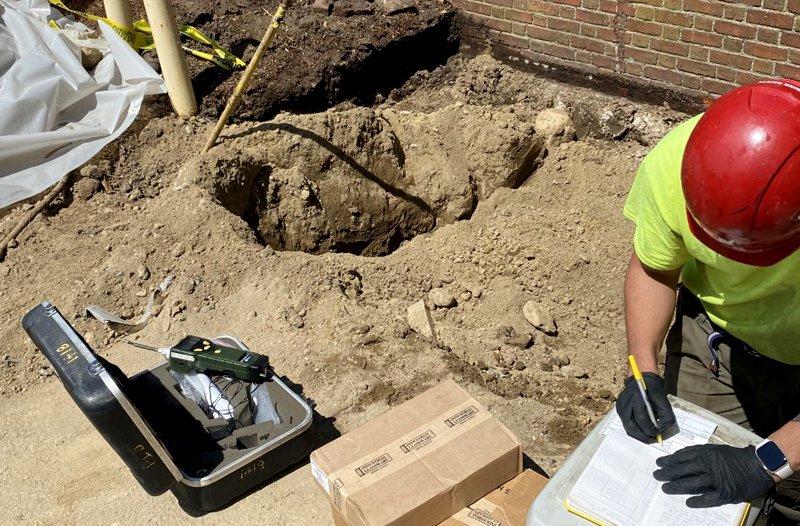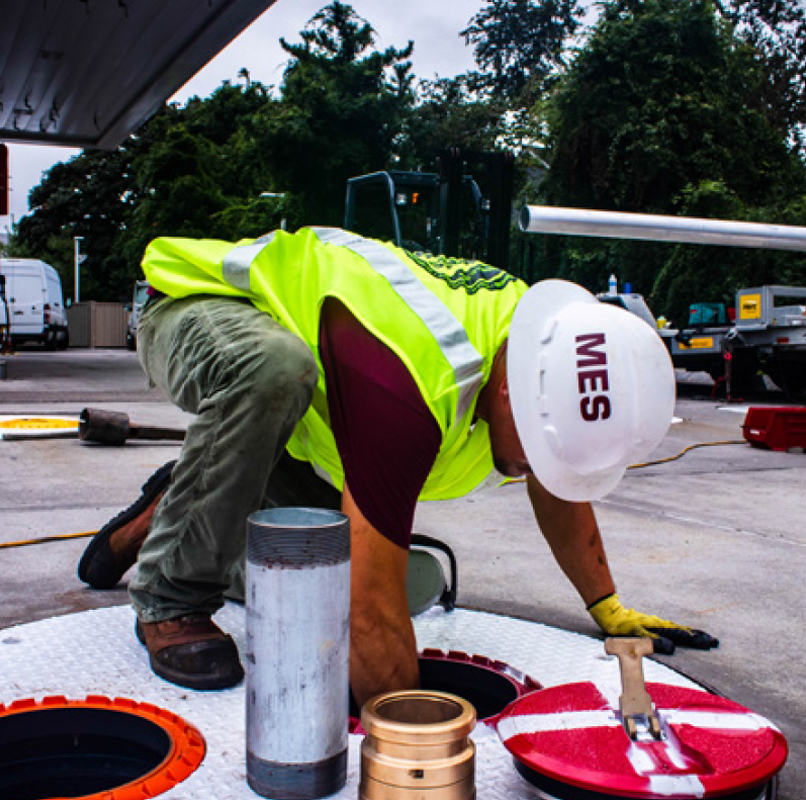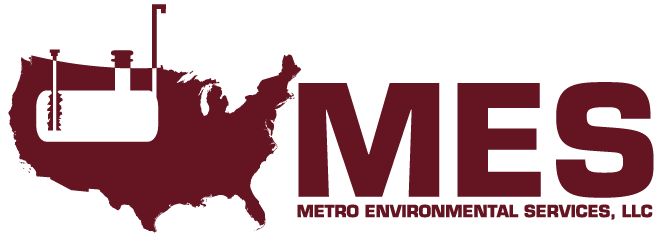IDENTIFICATION AND MITIGATION OF THREATS, AIR EMISSIONS TESTING AND MODELING, AIR MONITORING, REMEDIAL DESIGN
GAS STATION – MASSACHUSETTS

MES was retained by a petroleum company as a result of gasoline vapors inside the station building. Based on the affected receptor, Immediate Response Actions (IRA) were conducted which included:
Ventilation using an evacuation blower in the short term while ultimately being converted into a sub-slab depressurization (SSD) system to mitigate vapor intrusion into the occupied structure.
- As part of system operation, maintenance, and monitoring (OM&M) activities system flowrates, vapor phase carbon influent/midfluent/effluent monitoring, and continued maintenance is performed to ensure 95% destruction efficiency of the SSD system.
MES was retained by a petroleum company as a result of gasoline vapors inside the station building. Based on the affected receptor, Immediate Response Actions (IRA) were conducted which included:
Ventilation using an evacuation blower in the short term while ultimately being converted into a sub-slab depressurization (SSD) system to mitigate vapor intrusion into the occupied structure.
- As part of system operation, maintenance, and monitoring (OM&M) activities system flowrates, vapor phase carbon influent/midfluent/effluent monitoring, and continued maintenance is performed to ensure 95% destruction efficiency of the SSD system.
During operation of the SSD system additional assessment/evaluation was conducted which included:
- Evaluation of preferential migration pathways (PMPs), substantial release migration (SRM), imminent hazard (IH), and critical exposure pathways (CEPs) continue to be conducted. Indoor air screening/sampling activities continue to be conducted to evaluate risk to commercial workers at the station and ensure the effective operation of the SSD system.
Reporting included the submittal of Massachusetts Contingency Plan (MCP) deliverables included:
- IRA, Phase I Initial Site Investigation (ISI) with Numerical Ranking System (NRS) Scoresheet and Tier I Classification (Tier I Permit Application);
- Phase II Comprehensive Site Assessment ( CSA) with Method 3 Risk Characterization and Phase III Remedial Action Plan (RAP).
During operation of the SSD system additional assessment/evaluation was conducted which included:
- Evaluation of preferential migration pathways (PMPs), substantial release migration (SRM), imminent hazard (IH), and critical exposure pathways (CEPs) continue to be conducted. Indoor air screening/sampling activities continue to be conducted to evaluate risk to commercial workers at the station and ensure the effective operation of the SSD system.
Reporting included the submittal of Massachusetts Contingency Plan (MCP) deliverables included:
- IRA, Phase I Initial Site Investigation (ISI) with Numerical Ranking System (NRS) Scoresheet and Tier I Classification (Tier I Permit Application);
- Phase II Comprehensive Site Assessment ( CSA) with Method 3 Risk Characterization and Phase III Remedial Action Plan (RAP).
Indoor air monitoring activities have also been conducted to evaluate potential vapor migration into the station building. Evaluations conducted have determined that indoor air concentrations currently pose No Significant Risk to commercial workers although additional activities are required to reduce indoor air concentrations at the site for future use to pose No Significant Risk to residences. Subsequent project-related activities have included the following:
- State and local regulatory agency reporting and correspondence;
- Underground storage tank (UST) and line testing;
- Underground utility monitoring and assessment;
- City of Boston permitting;
- Hazardous and non-hazardous waste management and disposal;
- Level I, II III air monitoring, sampling, and analysis;
- Reimbursement applications and approvals; and
- State regulatory compliance and reporting.
Indoor air monitoring activities have also been conducted to evaluate potential vapor migration into the station building. Evaluations conducted have determined that indoor air concentrations currently pose No Significant Risk to commercial workers although additional activities are required to reduce indoor air concentrations at the site for future use to pose No Significant Risk to residences. Subsequent project-related activities have included the following:
- State and local regulatory agency reporting and correspondence;
- Underground storage tank (UST) and line testing;
- Underground utility monitoring and assessment;
- City of Boston permitting;
- Hazardous and non-hazardous waste management and disposal;
- Level I, II III air monitoring, sampling, and analysis;
- Reimbursement applications and approvals; and
- State regulatory compliance and reporting.

START YOUR PROJECT WITH US
Our decades of experience with fuel facility construction and maintenance services makes us a leader in the field.
We provide complete above ground and underground storage tank construction, as well as associated piping, monitoring, and fuel management systems across Suffolk and Nassau counties, New York City, Westchester, New Jersey, and nearby states.
If you’re in need of pump and tank construction system services, give the experts at MES a call. We promise to deliver timely results with constant communication.



